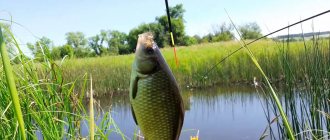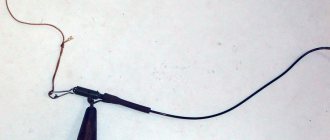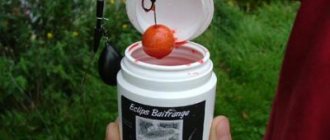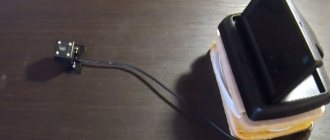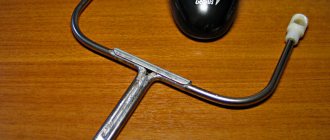Flavors for fishing are a huge range of special additives that attract fish. Among them are branded powders and liquids, which can be purchased ready-made, and home-made formulations.
A branded flavor is a liquid (powder, spray) with a certain concentration of aromatic substances. All you have to do is select the desired composition and apply it.
Branded flavors significantly improve homemade groundbait . But adding such flavorings to store-bought bait, which is already quite aromatic, makes no sense.
But not everyone wants to give their hard-earned money for an expensive jar of branded flavor. In addition, it is not possible to find a good store for fishing enthusiasts everywhere. In such cases, you can make your own flavors.
- 2 Homemade flavors for fishing - dips
- 3 How to use dips?
- 4 Special substances for flavoring
- 5 Liquid dips based on sugar syrup
- 6 Alcohol flavoring recipes
- 7 Flavors for crucian carp
7.1 Favorite smells of crucian carp
Aromatherapy for fish or fishing?
When you mention the concept of flavoring, many amateur fishermen will remember vanilla or anise, or, at best, store-bought “Sensas”. However, in order for the fish to really bite, you need to expand your knowledge a little. And if someone likes to just “sit with a fishing rod in nature,” then others need a specific result.
It is worth distinguishing flavors according to their functional purpose in relation to the stages of fishing:
- flavored bait compositions;
- flavored compositions for bites or dips.
Dips are designed to ensure that fish attracted to the fishing site peck at the bait. Some formulations will simply interest the fish, but will not make them want to eat. These are bait mixtures that make the fish interested in swimming to the place where you are going to fish. If you not only need to give the fish aromatherapy, but also catch it, then you need to use dips. Moreover, after two or three fish are caught, the dips need to be changed.
Flavors for predators
When catching predatory fish, it is also recommended to use flavorings, although you should know that they will not seriously affect the bite of pike and perch, since the above-mentioned fish species are more oriented not by smell, but by sight, but when catching pike perch and catfish, their use can noticeably affect the bite. For predatory fish, attractants are made based on the smell of shelter and various crushed and dried worms and insects.
Features of using homemade flavors:
- The effect of the attractant lasts on average for only one hour, after which it must be reapplied.
- It is not recommended to use excessive amounts of fragrance.
- Treated baits must be stored separately from processed ones. Preferably in tightly closed boxes and containers.
- When using alcohol-based flavors when fishing with worms or bloodworms, it is advisable to treat the hook rather than the bait itself.
When using the most effective and favorite flavorings, it is worth considering that they are not a 100% guarantee of a good bite, but only help improve it, and make the fishing process more fun and creative.
Homemade flavorings for fishing - dips
In addition to the high cost of branded dips, one can note a limited selection of scents . One way or another, any fisherman has to prepare his own “lotions” and “powders”.
You can divide substances that are used as dips (alone or in a mixture) into two subcategories:
- Powders: vanillin, vanilla sugar, garlic, turmeric, cinnamon, coriander, curry, anise, dill or fennel;
- Liquids: liquid vanillin, fish oil, vegetable oils (hemp, flax or sunflower), garlic oil, non-synthetic essential oils (anise, cinnamon, coriander, eucalyptus or fennel).
These substances can also be used to flavor bait, in which case it is a flavoring agent, or for bait – dips.
Types of flavors
In specialty stores you can buy absolutely any flavor; fortunately, a wide range allows you to choose a more pleasant scent.
Read here Fly fishing - a description of the technique and secrets of fishing with a spinning rod and fishing rod (130 photos + video)
If we talk about types, then flavors for winter fishing (and not only for it) are divided into the following categories:
- Dry form;
- In the form of a thick syrup;
- Spray sprayer
- Liquid option.
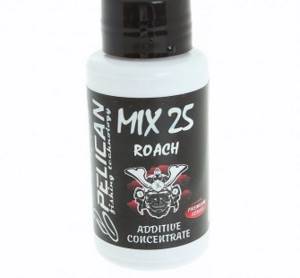
In this case, each fisherman chooses what he likes best. Most often it is dry and liquid form.
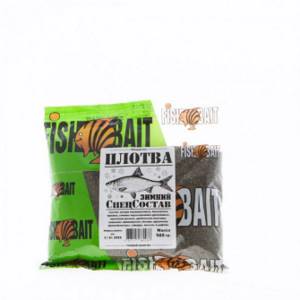
How to use dips?
To “dry” the bait with powder, it is advisable to sprinkle it 1 day before fishing, so, for example, maggots will have time to capture the smell. Proportions are mostly determined empirically, but there are still certain guidelines For a box of maggots 1.5 times larger than a match box you need:
- Vanilla sugar - 1 tsp, vanillin is needed in lower concentrations, they need to be selected;
- Turmeric – 1/3 tsp;
- Garlic – 1 tsp;
- Anise, cinnamon, dill, coriander, curry – ½ tsp.
It's up to you whether you use one powder or a mixture; the second option involves many combinations - try it. A few working compositions for inspiration:
- Vanilla/cinnamon/turmeric;
- Vanilla/dill/cinnamon;
- Vanilla/coriander/anise;
- Garlic/cinnamon or garlic/anise;
Liquid dips are much more convenient - you just need to dip them into a flavored liquid. Unlike powder, liquid has better adhesion to the surface. Just like with powders, liquid dips can consist of one or more components:
- fish oil/hemp or garlic oil;
- hemp oil/garlic oil;
- Liquid vanilla/hemp or garlic oil;
- Liquid vanilla/fish oil.
Other proven effective mixtures for different fish:
- Crucian carp: kerosene, mint, anise, dill, calamus/capsule/cattail root, cocoa and garlic;
- Bream: honey, vanilla, cloves, cinnamon, anise oil, fennel, strawberries;
- Carp: honey, cinnamon, ground red pepper, anise oil, mint and strawberries.
Essential oils can also be added a few drops to the above-mentioned compositions, and for purity of smell to corn oil. You need to vary the number of drops yourself, achieving the appearance of a faint odor. You will need to add about 7-12 drops to corn oil; to fragrant oil (for example, garlic) you need to add no more than 7 drops. It all depends on whether you want to add a slight note of essential oil aroma to the main mixture or whether these oils work in pairs. In any case, the aroma of the essential oil should not interrupt the aroma of the base with its own scent.
How to properly flavor bait
Many of us have addressed the topic of the influence of odors on the life of fish more than once or twice. And this is understandable - this question is quite confusing and vague. Scientists' research in this area is largely focused on commercial fishing and is usually carried out on marine fish. Our fishing stores are filled with expensive aromatic “lures” for fish and fishermen themselves. Well, our simple fisherman, who thinks and questions everything, traditionally follows the proverb “trust, but verify,” and checks everything in practice, that is, on a pond.
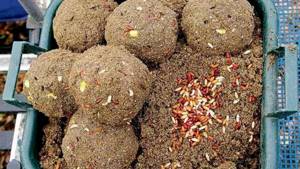
The irrepressible desire to fish always and everywhere constantly pushes anglers to search for some effective innovation in equipment, bait recipes, bait combinations and, of course, ways to attract fish.
Given the low density of fish in most domestic water bodies, the topic of attracting fish to the fishing site is very interesting for many of us. Therefore, for ten years now I have not given up trying to “find” a universal, effective set of flavors for bait or a successful combination of them. But every time at the end of the next season I come to the conclusion that the coolest recipe has eluded me again, and next summer everything will have to start all over again, but still not from complete scratch. I will share with anglers my experience in this complex area.
I consider all white fish, and first of all, ordinary inhabitants of our lakes, ponds and reservoirs, to be the type of fish that actively use the organs of touch, smell and taste to search for food in the water. Water is, at its core, a natural solvent, so any food bait, be it animal or plant, begins to release active substances in the water. Water dissolves them and, in the presence of a current, transports them over long distances. This is probably why the same chopped worm in bait attracts fish to the fishing spot much faster than a whole one. Fish that enter the zone of distribution of active substances begin to move directionally towards the source of distribution of these substances (if they are pleasant to them) or away from it (if the substances cause aversion and anxiety).
What are these active substances that cause fish to move in a directional manner? Purely conditionally, they consist of 2 large groups - flavoring agents and attractants.
Read: Bait for bream - fisherman's secrets
Flavorings, in my opinion, for the most part do not affect the appetite of fish, but only attract it to the source of distribution, irritating the olfactory receptors. Attractants not only irritate the olfactory and taste receptors of fish, stimulating appetite, but also carry information about the nutritional value of the object. Thus, it can be assumed that the attractant disseminates information in water about the nutritional value, and the natural flavor conveys information about the pleasant taste of the source of active substances.
The dividing line between attractant and flavoring seems very blurred to me, but one thing is obvious: you need a mixture of them - a combination in bait to successfully attract fish to the fishing point. Bait that spreads information in the water about its high nutritional value should attract fish faster.
The nutritional value of complementary foods (bait) is determined by the content, mainly, of easily digestible protein, and, to a lesser extent, by the content of fats and carbohydrates, as the main nutrients necessary for the fish’s body.
In the composition of complementary foods, not only the quantitative component of protein is undeniably important, but its quality is no less important.
The quality of protein is determined by the release of a significant amount of amino acids during the breakdown of protein molecules during the digestion procedure. Amino acids are the elements from which all proteins are built. Proteins received with bait are broken down into amino acids in the gastrointestinal tract of fish, the latter are then absorbed into the blood. In muscle tissues that are actively filled with blood, proteins are again synthesized from amino acids, which the fish body uses as plastic material to preserve and build muscle tissue.
Depending on the content of amino acids, proteins are divided into complete animals (meat, eggs, milk, cheese, etc. are rich in them). Animal proteins are somewhat more complete and quickly absorbed by the fish’s body than plant proteins. Naturally, by adding various animal proteins to the bait, contained in the muscle tissue of worms, caterpillars, flies, and grasshoppers, we can greatly increase its nutritional value. But proteins cannot be dissolved by water within a short period of time, and therefore it is necessary to have pure, ready-to-use amino acids in the bait, which, immediately dissolved in water, will be transported by it over a considerable distance and will attract the attention of the fish.
During research at the Department of Ichthyology, Faculty of Biology, Moscow State University, it was found that the most effective odor and taste stimulants for fish are amino acids. From this it becomes clear that amino acids are effective attractants, and in combination with aromatic substances they significantly increase the attractiveness of any feed mixture.
Read: The main secrets of spring bait. Pre-spawning activity – fiction or fact?
As attractants of animal origin, that is, sources of amino acids, I use water or alcohol extracts from animal organs (liver, lungs, brain, pancreas), dried blood, dried and crushed shrimp. And right on the pond - chopped mollusks, grasshoppers, caterpillars, etc. I never thought before that crucian carp are well attracted by dry blood in bait and in plant bait. At one time, I spent the whole season catching crucian carp on a small lake with donks about 60 meters from the shore. The fish did not bite on the fishing rods from the shore. But one angler was consistently catching with a fishing rod and no less than me. Only a year later, when we got to know each other better, he discovered his secret to biting, which was to use dried blood supplements. It turns out that in this place of the lake, using this attractant, the crucian carp approached the shore.
As flavoring agents I use amino acids of plant origin contained in extracts of plants and herbs (mint, thyme, dill, hemp, garlic, cumin, coriander). I also use vegetable oils: sunflower, anise, lavender, burdock. The plant aromas that have to be extracted are concentrated in individual parts of the plant - leaves, flowers, buds, seeds, fruits, and they do not always have the same taste index. For example, hemp pollen has almost no odor, but is very rich in microelements, the leaves have a distinct aroma of vegetable oils, and the seeds still have their own aroma, different from the aroma of the leaves. All aromatic substances are extracted using known solvents - water, alcohol, sunflower oil. Extraction with hot water, when boiled in a closed container, is the simplest and takes little time, but under the influence of high temperature many valuable substances are destroyed. Therefore, it is better to use alcohol infusions - factory or homemade extracts. Alcohol dissolves all components of the herbal flavoring and at the same time acts as a preservative if the container is tightly closed. Alcohol tincture, in turn, dissolves quite well even in cold water.
Sunflower oil is also a good solvent for the active substances of plants, only this extraction process takes much longer than the two described above. In order, for example, to extract oils from mint leaves, you need to dry the leaves, crush them into powder, pour in sunflower oil and then infuse for two to three weeks. Aromatic vegetable oils have a number of undeniable advantages. For example, they dissolve much more slowly in warm water of lakes and rivers than alcoholic ones. They can be either heavier or lighter than water. If complementary food contains a lot of oil flavorings of this type, then when it gets into the water, numerous particles, freed from the main mass, fill all horizons, from the surface to the very bottom.
Read: Tactics for feeding bream during winter fishing
When making plant extracts at home, I had to face one unpleasant circumstance. A water extract from dried herbs and the same from fresh herbs can differ significantly in aromas. For example, the well-known herb thyme (chabor). A decoction made from fresh raw materials has a pleasant honey aroma, but from dried raw materials this does not always happen. Apparently the problem is in the technology of drying plants, and in order to avoid incidents with aroma, I now use only fresh plant materials. Nature itself tells us what plant raw materials can be used at a certain moment; it is not for nothing that the flowering and ripening period of many plants is significantly extended in time.
In spring, willow and alder bloom first, followed by birch. The pollen of these trees is very rich in microelements and is highly soluble in alcohol. Then the bird cherry blossoms - an excellent flavor for bait, followed by the apple tree, and later rye, wheat, linden, etc. By the way, most folk wisdom about the beginning of active biting of a certain fish is tied to the flowering time of certain plants.
A water extract from the flowers of all plants, and especially those that grow near water bodies, has excellent aromatic properties, and when added to a dry bait mixture, it perfectly enriches it.
But if, for example, you don’t have a hood at hand, you haven’t bought an alcohol tincture or aromatic oil. In such cases, sunflower, flax, hemp, and dill seeds always help me out. After frying them in a frying pan, I grind them in a coffee grinder - I get a wonderful coarse flour, saturated with the same vegetable oils. I perform this operation immediately before fishing and use the flour immediately, since in air it quickly oxidizes, losing essential oils. The fish, with the help of its senses, will quickly understand the freshness of the food mixture offered to it.
Special substances for flavoring
As practice shows, fish respond well to many drugs from the pharmacy:
- Castor oil;
- Valerian;
- “Star”, etc.
These medications contain natural substances with a strong, attractive odor.
A special place is given to flavorings of animal origin:
- Fish fat;
- Bloodworm;
- Dried blood;
- Canned food and other similar substances.
As in any business, the main thing is not to overdo it, so that instead of an attractive flavor you end up with a fish repeller.
Rules for using home fragrances
The correct use of flavorings includes the following rules:
- You should not add too much flavoring to complementary foods or baits, since a too concentrated smell will not attract fish, but will scare them away.
- When using step retrieving, the bait needs to be sprayed with flavor every two casts. If it is updated less frequently, the required odor persistence will be less noticeable to the fish.
- Some store-bought fragrances should only be used once, as their aromatic properties are lost the next day. This is worth considering when purchasing them.
- Baits such as worms or maggots should be scented every hour.
- Flavors should be stored in tightly sealed containers, which should be placed in the refrigerator (not the freezer) after fishing.
- If the flavoring agent is alcohol-based, the nozzle itself does not need to be treated with it. Only the hook should be lubricated with it.
- Liquid flavors have a greater concentration of scent than dry ones, so they need to be used in smaller quantities.
- When adding flavoring to a groundbait mixture, you need to find out in what quantities it should be mixed and to what mixture they should be added.
- When catching predatory fish species, you need to use flavorings in the form of sprays or oils, since they are the most persistent.
There is no need to buy a store-bought scent enhancer - you can make it yourself. Maintaining the required dosage is not a problem, it doesn’t require a long time, especially delicate work either - it’s simple.
In general, the composition of fishing dip is based on one of 2 main components:
- Homemade dips at home
or it is a nutritious liquid - a nutrient that attracts fish doubly - not only with aroma, but also with the ability to get enough; - or it is sugar syrup - prepared over low heat, based on the proportion of 750 ml of water per 1 kg of sugar for 1 liter.
To this base are added flavors, volumizing ingredients (such as glycerin) and, optionally, essential oils.
The choice of nutritional liquids is very wide: these include natural proteins that are easily digestible (Minamino, Amino PPC and others), and molasses along with beet or corn processed products (CSL). A separate category should include appetite stimulants, which are suitable for any water temperature and are therefore especially in demand in hot and cold weather. You also need to remember liquid yeast with liver and fish protein (L-030).
Attention, it is necessary that the aroma of the odor enhancer is the same as that which will be used to increase the attractiveness of boilies or other bait. It is important not to confuse potential prey, not to disturb its sensitive sense of smell, or to alert it.
Dry aromatic substances are mainly added to homemade bait mixtures. If the supplement is branded, then this is very easy to do, you just need to follow the instructions on the product packaging. When using dried and crushed plants yourself, you need to be guided by your sense of smell and intuition.
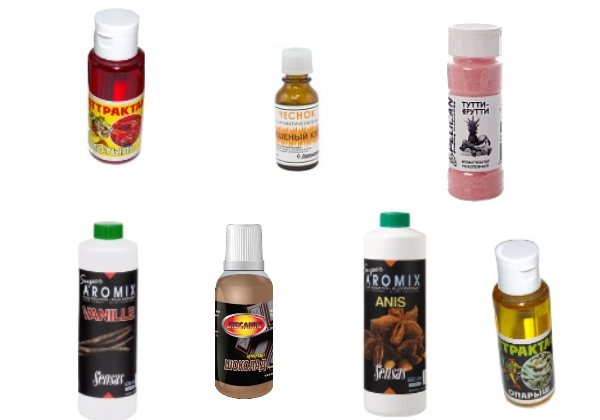
In order for the use of flavors to be truly effective, you need to know some rules for their use. Firstly, it should be borne in mind that liquid additives have a stronger and more pronounced odor than dry ones. Secondly, you should definitely take into account the basis on which they are made.
For example, oil-based flavors - they are more suitable for fishing in the warm season. And in cold water it is best to use alcohol-based flavors. It should also be taken into account that alcohol tinctures dissolve faster in water, and in hot weather their smell quickly evaporates.
We suggest you read: How to find out the structure of a spinning rod
How to catch more fish?
I have been active fishing for quite some time and have found many ways to improve the bite. And here are the most effective:
- Bite activator. Attracts fish in cold and warm water with the help of pheromones included in the composition and stimulates its appetite. It’s a pity that Rosprirodnadzor wants to impose a ban on its sale.
- More sensitive gear. Reviews and instructions for other types of gear can be found on the pages of my website.
- Lures using pheromones.
You can get the rest of the secrets of successful fishing for free by reading my other materials on the site.
Advantages
Today there are a huge number of different flavors on sale, but despite this, many fishermen continue to make them themselves, explaining this with a number of advantages:
- can always get the desired result using their own and proven recipe.
- have extensive experience in fishing in a particular body of water.
- You can always experiment with a variety of different scents.
- The cost of a homemade flavor is usually several times lower than in the store.
Flaws
The disadvantages of homemade flavors include the fact that their range in the store is constantly updated and increased. At the same time, many manufacturing companies are constantly searching for new flavoring solutions, experimenting with the compositions and concentrations of their products, bringing them to optimal values.
At the same time, they take into account many factors: the results of numerous studies, the experience of professional fishermen and athletes, reviews of their consumers, and so on.
Liquid dips based on sugar syrup
What could be simpler than ordinary sugar and water? It's even cheaper than fish oil or corn oil. Sugar syrup is an excellent viscous, nutritious and at the same time aromatic base for a dip or even a dip on its own.
You need to take 300 grams of sugar and 1 glass of boiling water, put it on the fire and bring to a boil, remembering to stir. Remove the foam with a spoon and wipe it with a clean napkin. A clear syrup should form that can be stored for a long time. However, after crystallization, the syrup will need to be boiled again.
To make the syrup more aromatic in the finished dip, you can use several recipes:
- Vanilla: add vanilla or any vanilla analogue to the heated boiling syrup per 1 liter of syrup - 1 packet of vanillin or 5 packets of vanilla sugar;
- Coffee or chocolate: add finely ground roasted coffee, cocoa powder or grated chocolate to sugar syrup, boil for 15 minutes, proportions: per 1 liter. syrup you need 150 grams of coffee (cocoa or chocolate);
- Spicy: cinnamon, coriander, cloves in powder form are added to sugar syrup, a little water and lemon juice (you can do without it). Cook for about 10 minutes. Per 1 liter. syrup - 2 tsp. spicy seasonings, 8 tsp. lemon juice.
In principle, you can add any additives to the sugar syrup according to your preference, or rather, according to the fish’s preference.
How to make dips for fishing - DIY flavorings
There are many different tricks that anglers use to get a good catch.
In addition to a variety of supplements, attachments, and baits, there are special mixtures of flavors that additionally attract and provoke “capricious” fish to bite. This product can be used all year round. As a rule, most fishing enthusiasts buy ready-made flavoring mixtures in stores. However, for certain reasons (savings, lack of necessary aromas, etc.), some fishermen prefer to make such flavors with their own hands. In this article I will share several recipes for preparing liquid flavoring mixtures - dips intended for bait / bait. That is, directly while fishing, the bait is dipped into this liquid mixture before casting it, so that the bait (or bait) acquires an additional aroma.
To prepare dips you will need the following.
- A container with a capacity of about 100 ml, in which the flavoring liquid will be prepared and stored, and it is better to choose one with a wide neck. These can be any plastic jars or cups with a tight-fitting lid. For example, test jars sold in pharmacies are suitable.
- Glycerin, food grade or pharmaceutical grade.
- Appetite stimulant - betaine in the form of a dry supplement, sold in fishing stores.
- Liquid concentrate of food flavoring of the desired aroma (anise, vanilla, strawberry, mango, etc.). You can buy it where goods for making confectionery are sold, or you can find it in a fishing store.
Cooking process
Pour 80 grams of glycerin into the container. Then add a little betaine, literally at the tip of a teaspoon. Next, you need to add three to six drops of food flavoring concentrate. Mix everything thoroughly, close the lid tightly, label the jar with what aroma it contains and place in a dark, warm place. You can use the prepared dip after five to seven days. But during this time, once a day it is necessary to stir the liquid again. Dips prepared in this way are most suitable for fishing in cold water - spring, autumn, winter.
When fishing in warm water (late spring, summer, early autumn), dips based on invert (sugar) syrup are popular. Prepare invert syrup as follows. For 1 kg of sugar you will need 440 grams of water (roughly half a liter) and 3.5 grams of citric acid (about half a teaspoon). The water must be clean, without any chlorine, etc. You need to cook the syrup in an enamel bowl; aluminum is not suitable. The cooking vessel is chosen to be deep so that the syrup in it is no more than half the depth of the vessel, later you will understand why.
First, bring the water to a boil, then pour sugar into it. And cook over low heat, stirring constantly until the sugar in the water is completely dissolved. After the sugar has completely dissolved, add citric acid, also stirring thoroughly. Leave the resulting mixture to cook for another 15-20 minutes. After the specified time has passed, turn off the stove. Next, add a little boiled water, literally five grams, to a separate glass, and dissolve half a teaspoon of baking soda in it.
Now pour the baking soda prepared in a separate glass into the syrup. Attention! The reaction is violent and accompanied by the release of a large amount of foam, so pour in the soda slowly. This entire mixture must be stirred until the foam on the syrup disappears. After this, put the syrup on the stove again, bring to a boil and then turn off. Let cool until warm and pour into containers. While the syrup has not cooled completely, you need to add the necessary aroma to it.
You can use a packet of vanillin per liter of syrup. Cocoa or grated chocolate is mixed in proportions of 150 grams per liter of syrup. The same proportions for spices - dill, mint and so on. In addition to dry powder flavors, liquid flavor concentrates can also be added to syrup. The manufacturer usually indicates dilution proportions in the instructions for use. When stored in the refrigerator, the shelf life of dips made with this sugar syrup is quite long - up to three months or more.
Another dip recipe, designed mainly for fishing in warm water, although it can also be used in cold water. It is prepared in the same way as recipe No. 1, only the proportions are different and you will need one more ingredient - invert (sugar) syrup (of course, pure syrup, without flavors). The cooking procedure is as follows. Pour about 50 mm of glycerin into a glass with a volume of 100 mm. Next comes sugar syrup, approximately 30 ml.
Now add a little betaine and stir it all well. Then add your flavor concentrate, about 5 ml, to the resulting mixture (you can measure it with a syringe), and mix the mixture thoroughly again. After this, tightly close the glass with a lid, write down what flavor it is and, in principle, the process of preparing the dip is complete.
Alcohol flavoring recipes
Alcohol formulations are good because they can be stored for a long time and alcohol, as is known, enhances the effect of substances. In addition, only alcohol options are suitable for winter fishing, and in summer it perfectly prevents fermentation. Here are some recipes:
- Alcohol flavoring with dry additives. You need to take a dark glass jar and add dry anise, cinnamon, dill, cloves, garlic and add a glass of forty-proof vodka. After shaking the contents well, let it steep for three weeks. This recipe, reminiscent of spices for kharcho, is suitable for use as a dip - you can dip the nozzles into it, as well as pre-soak them in this mixture. You can change the ingredients and their concentration depending on your preferences;
- Alcohol flavoring from fresh herbal additives. The same ingredients are used here as in the first one, but in a fresh form. You can use cucumber as a base, and add a little salt to avoid fermentation.
Preparation of liquid flavoring for bait

In fishing stores you can find liquid liquids, boosters and dips in large quantities. They are added to bait during moistening. The result is a very aromatic mass that should attract fish.
A good replacement for such flavorings are syrups diluted with glycerin and water. There is a large selection of syrups on sale: strawberry, raspberry, orange, duchesse, etc. They are much cheaper in price than those sold in fishing stores.
Let's consider one of the recipes for obtaining liquid aroma. We will need the following products:
- Water – 0.5 l
- Syrup – 0.5 l
- Glycerin – 100 g.
- Betaine – 6 tablets
Mix all the ingredients and get an excellent booster. For 1 kg of bait you need 200 grams of the resulting aroma. The price is much cheaper than store-bought perfumes. And in terms of efficiency it is practically not inferior, except perhaps to foreign goods with astronomical prices.
For information on how and with what to attract fish, read the following articles:
Follow us on social networks
– through them we publish a lot of interesting information, photos and videos.
Popular sections of the site:
The fisherman's calendar will allow you to understand how all the fish bite depending on the time of year and month.
The fishing gear page will tell you about many popular gear and devices for fishing.
Fishing baits – we describe in detail live, plant, artificial and unusual ones.
In the bait article you will get acquainted with the main types, as well as tactics for using them.
Learn all the fishing lures to become a real fisherman and learn how to choose the right one.
Flavors for crucian carp
Many people consider making their own flavor a real pleasure. And this is true, but you need to know some secrets, and also take into account many factors: features of the fishing location, season, the presence of neighboring fishermen, etc.
Favorite smells of crucian carp
What smells does crucian carp prefer? Experience, experiments and centuries-old observations of fish behavior have helped to find many interesting and even extreme recipes. In addition to traditional black bread, garlic powder, dill, and sunflower oil, crucian carp responds well to the smell of dung worms. However, you need to keep it in a box with mint , then it will become especially tempting for this fish.
One of the unexpected finds for catching crucian carp is the famous “Star” ointment. In order not to “bother” too much, you just need to smear your hands with this fragrant potion and knead dough, bread or other bait with it - the result is guaranteed! Other unusual options for crucian carp include kerosene, which, according to fishermen, gives excellent results.
Standard dips for crucian carp: anise, cocoa, vanilla and honey. Bait such as sunflower oil applied to corn grains works well.
It is imperative to use flavorings for baiting fish, experimenting with various additives. Baits that can be used are ground oatmeal cookies, toasted sunflower seeds or rolled oats porridge. The main thing is to make the right feeding, which does not fall into pieces, so that instead of fishing you do not give the fish a free feast at the bottom.
Flavorings for bait
Video about flavorings for both baits and groundbait:
An interesting fact is that fish’s sense of smell is several times stronger than that of dogs. That is why fish are capable of perceiving information about the surrounding aquatic environment at the molecular level. This means that any changes will definitely be noticed. But how she behaves is a completely different matter. The main thing is to make a good impression on the aquatic inhabitants to achieve a positive fishing result. But how to do that?
Use attractants, which can also be called stimulants. It all depends on you, whether you will use store-bought flavors or make them yourself. You don't need a lot of intelligence for this. The main thing is that they are easy to use.
At the same time, it is very difficult to make specific recommendations. After all, everything depends on many factors: weather conditions, the time of year and, of course, the fish you want to catch. Although a certain pattern can still be traced:
- in the spring and summer periods of the year, give your preference to fruity and sweet aromas;
- During the autumn and winter seasons, pay attention to spicy and fruity smells.
This is preferable for combined use during fishing, when there is no goal to catch a specific type of fish.
Seasons and scents
Different seasons of the year require different approaches to the preparation of bait, as well as in the choice of flavors. In the cold season, fish can be scared away by a too rich smell , so winter flavors for bait and dips should be less concentrated. In such seasons, it is recommended to choose bloodworms or worms as a flavoring agent. The thing is that in cold water the fish is sensitive to the slightest changes, and in warm weather bright fruity smells and honey are good.
Even an ideal flavoring may not work well if not fed correctly. In the summer, the fish does not require nutritious bait, since it easily finds it during the fertile period. What about in spring or late autumn? The fish stores fat for wintering or prepares for spawning, which means it needs especially nutritious bait.
Store-bought flavors
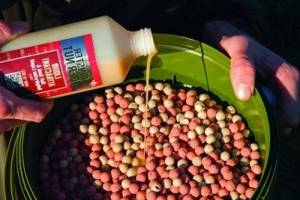
Today, there are a large number of different attractants that are produced at the production level by different firms and companies, both domestic and foreign. They may have different industrial bases and technological equipment. Therefore, the production of flavors may differ not only in the form of delivery of the substances, for example, whether it will be granules or gel, but also in the packaging method, the presence of a branded label, and much more.
Moreover, entire research institutes, advanced and talented ichthyologists, professionals in fish physiology and biotechnologists can work for modern holdings that produce flavorings in especially large volumes. There are also companies that work closely with organizations producing baits or baits. This:
- Berkley;
- Sensas;
- Rublex;
- Yum;
- Bass Assassin;
- Gary Yamamoto and many others.
Small manufacturers that do not have a broad scientific base and technological equipment are engaged in the production of flavorings based on:
- dried animal blood;
- extracts from shrimp and other marine life;
- worms;
- cakes;
- milk powder;
- confectionery and pharmacological flavorings and additives.
If we compare purchased attractants with traditional ones, there is no huge difference between them. The former simply have a more convenient form of delivery in the form of a spray or gel, and have their own special packaging. But most importantly, they must be accompanied by instructions or recommendations for use. Holdings today are trying to produce flavors by chemical synthesis or biotechnology, which is considered more profitable from the commercial side.
We lure crucian carp
When catching this type of fish, it is worth remembering that crucian carp is almost never hungry. Therefore, it is important not to overfeed him with bait, since in this case he, having eaten, may generally go in the opposite direction. For these purposes, you can use millet, ground rolled oats, and semolina.
Crucian carp can also be scared away by a strong or unfamiliar smell. You can use it as a flavoring for bream:
- Roots of aquatic plants.
- Garlic.
- Cocoa.
- Vanillin.
- Ground dill seeds.
- Dry mixes.
This type of bait is very easy to use. It is added both to independently prepared baits and to ready-made ones. The fisherman decides how much to use.
Flavoring of nozzles
Maybe this would have been the end of it, if not for an elderly fisherman who was nearby carrying crucian carp on one fishing rod from 100 to 500 g. When the sun rose, he pulled out a fish tank almost full of crucian carp and got ready to catch the nearest train. As he passed by, he offered him the bait he had left. It looks like the same dough, but with a very pleasant unusual aroma.
To my question about additives, he quickly said something about ammonia, Corvalol, vanilla and sunflower oil. Using his dough, my nephew and I caught most of the crucian carp mentioned above, in the very place where we caught it in the morning.
The next weekend, naturally, I went fishing again. I took some dough, to which I added Corvalol, vanilla and sunflower oil. At dawn I caught more than 30 crucian carp with fishing rods from 100 to 300 g, and, unfortunately, the dough ran out. Since then, I believe in the possibilities of aromatic additives and successfully catch crucian carp, carp and bream. I want to share a little accumulated experience in using aromatic additives with other fishermen.

